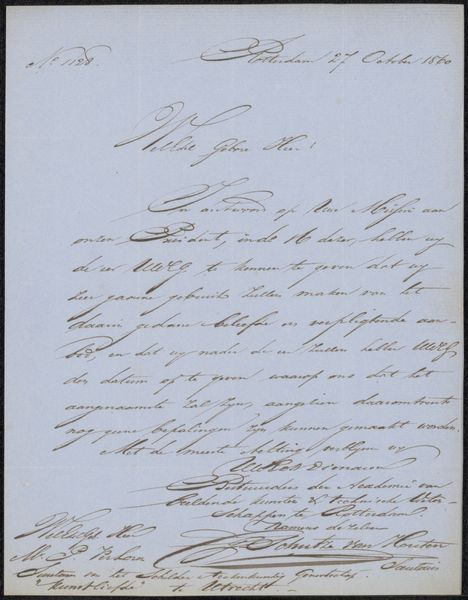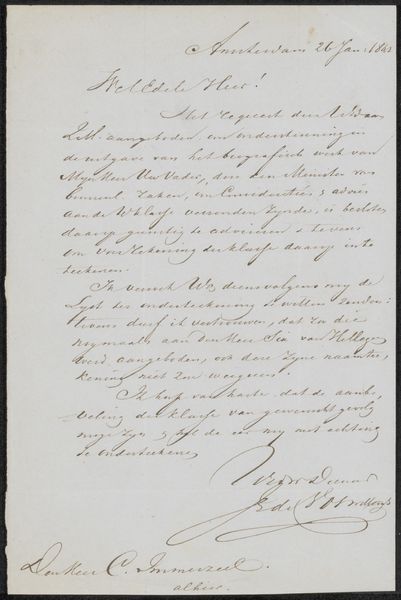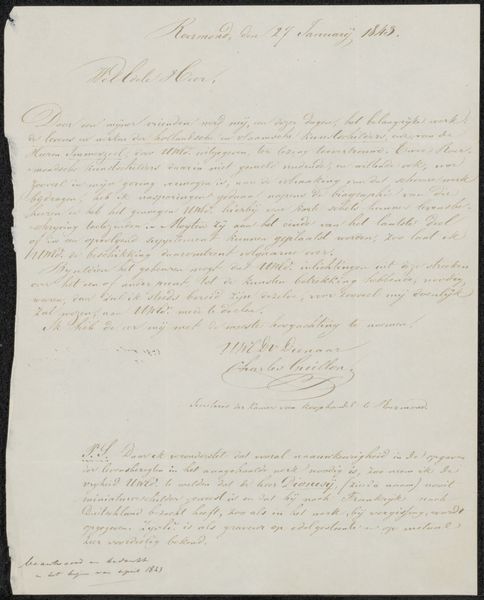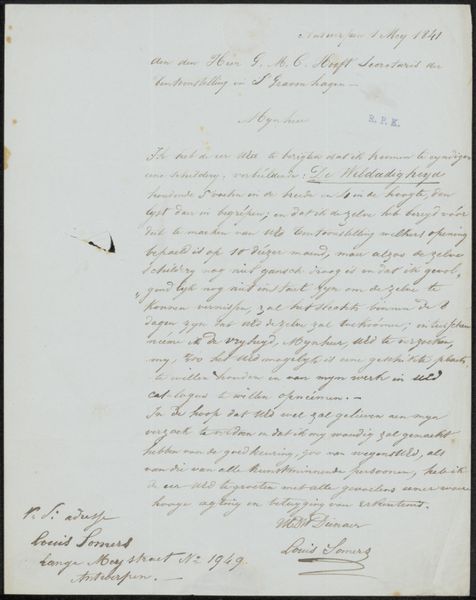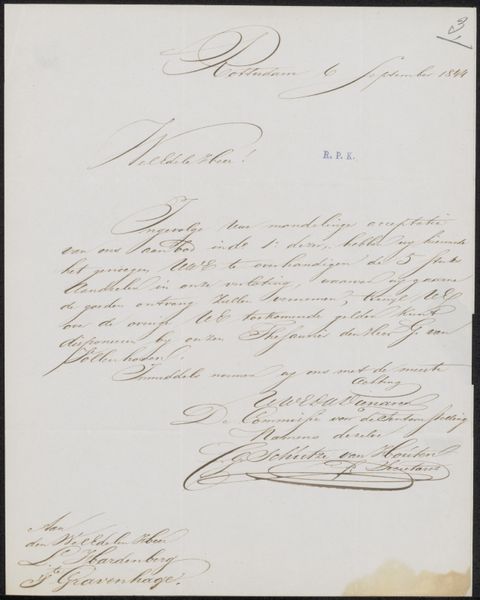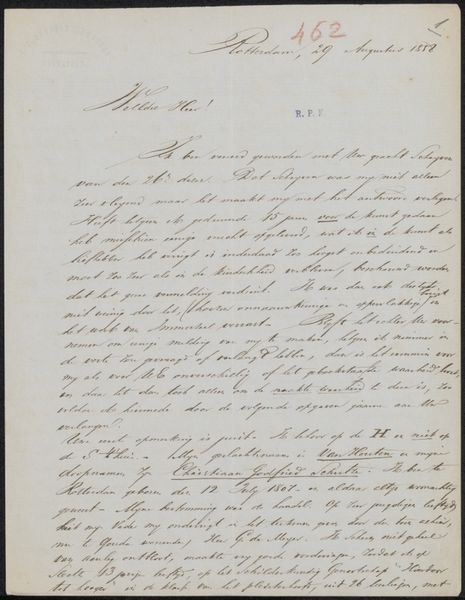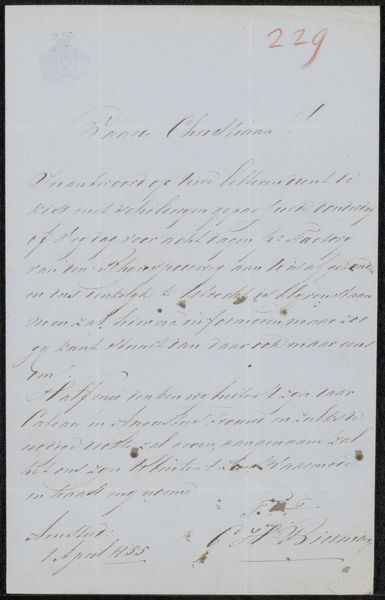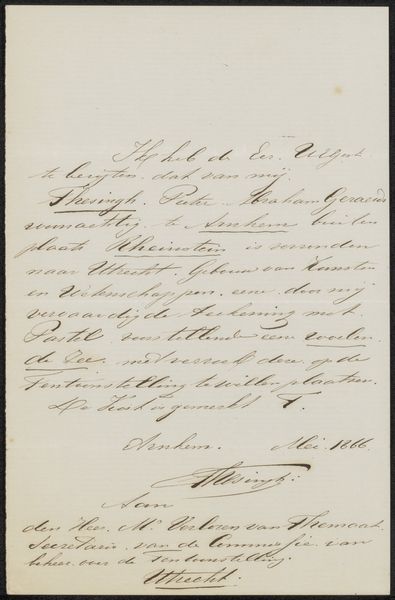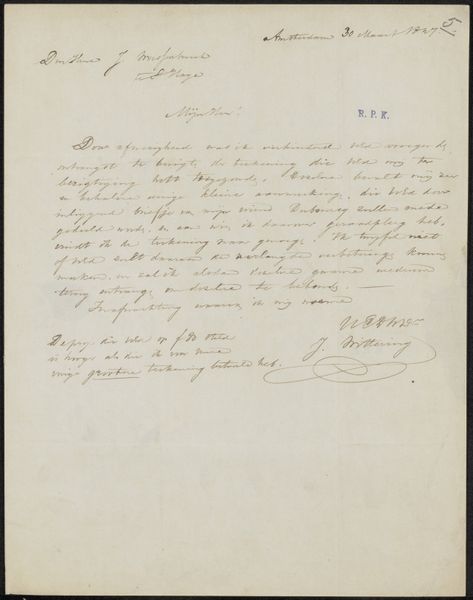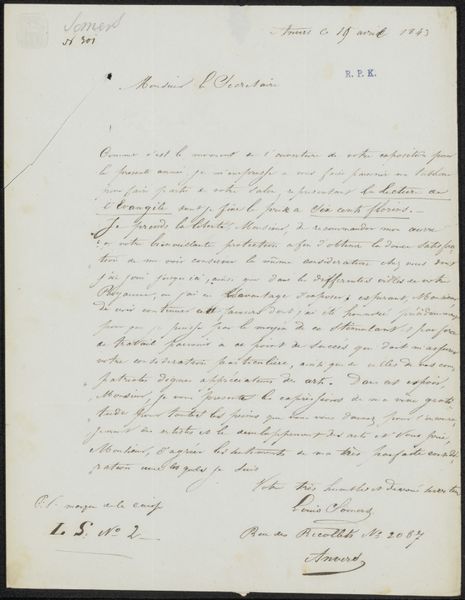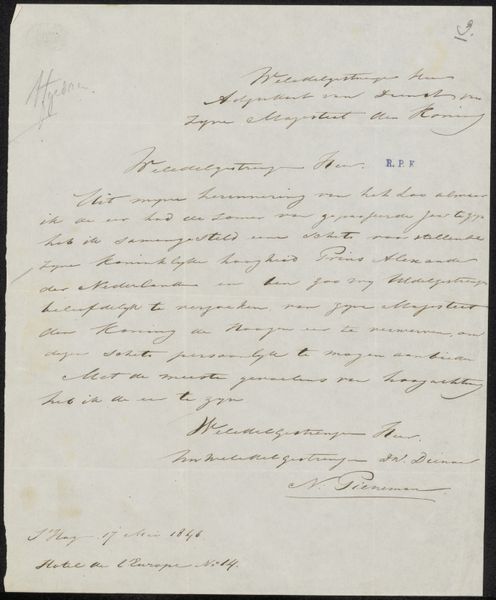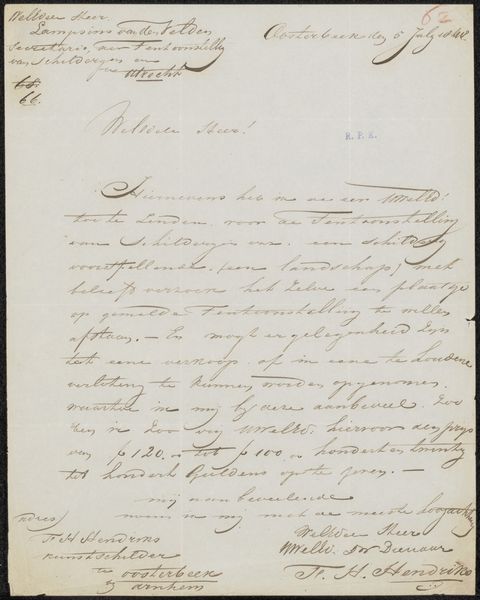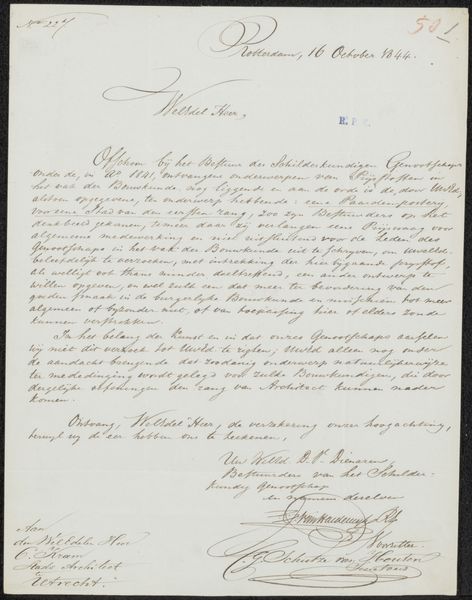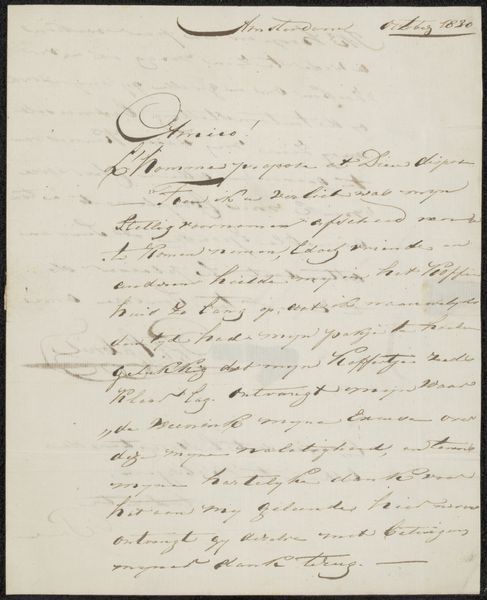
drawing, paper, ink, architecture
#
drawing
#
paper
#
ink
#
romanticism
#
architecture
#
calligraphy
Copyright: Rijks Museum: Open Domain
Curator: It’s compelling how something as quotidian as a letter can be seen as art. This one's called "Brief aan Christiaan Kramm," possibly from 1845 by Jan van Harderwijk, made with ink on paper. There’s a delicate, almost ethereal quality to the script. What do you make of it? Editor: I see a document embedded within a social network, a means of material exchange between individuals and institutions. Think about the labor involved: the gathering and preparation of the ink, the sourcing and processing of the paper, the skill and time invested in the penmanship itself. It speaks to a very different pace of production and communication than what we know today. What’s striking is the implied connection to architectural planning, suggesting how art intersects with practical concerns and power structures. Editor: I noticed it also features Romanticism in its style. I tend to consider that within paintings, but in writing too? Curator: Absolutely! Romanticism, particularly as it manifests here, reveals how even seemingly utilitarian documents were imbued with aesthetic considerations. Look at the flourishes and the overall presentation; it's designed to impress, reflecting the social standing of both the sender and the intended recipient. It blurs the line between document and carefully constructed art object, don't you think? Editor: So, the letter is less about the information conveyed and more about… reinforcing social relationships through material display? Curator: Precisely! The craftsmanship becomes a signifier of status and connection. By viewing it through this lens, we move beyond just the artistic merit to understanding its role in a wider network of material culture and social practice. The creation of the writing materials, the act of physically writing, even the delivery itself - each of those represents someone's labor, someone's resources that went into play to achieve a task and communicate a message. Editor: I hadn’t thought about it that way, that even the materials themselves hold meaning. I’ll definitely look at written pieces differently now. Curator: That's the beauty of shifting perspectives, right? It's more than simply lines of ink, it's the culmination of interconnected means of production and consumption.
Comments
No comments
Be the first to comment and join the conversation on the ultimate creative platform.
